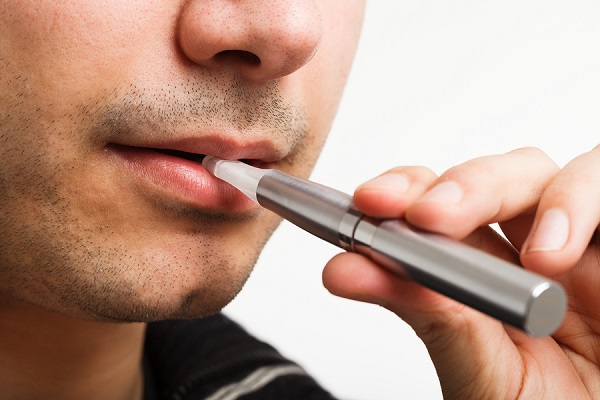An e-cigarette, or electronic cigarette, is an electronic inhaler used to simulate and by virtue act as a substitute for smoking tobacco.
Researchers at The University of Auckland found that both methods resulted in roughly similar proportions of smokers using either method remained abstinent from smoking for six months after a 12 week course of patches or e-cigarettes.
It is only the second controlled trial to be published which evaluates e-cigarettes and is the first ever trial to assess whether e-cigarettes are more or less effective than an established smoking cessation aid, nicotine patches, in helping smokers to quit.
Led by Associate Professor Chris Bullen, director of The University of Auckland's National Institute of Health Innovation (NIHI), a team of researchers recruited 657 smokers to the trial through adverts in local newspapers.
"While our results don't show any clear-cut differences between e-cigarettes and patches in terms of quit success after six months, it certainly seems that e-cigarettes were more effective in helping smokers who didn't quit to cut down," Prof Bullen said.
"It's also interesting that the people who took part in our study seemed to be much more enthusiastic about e-cigarettes than patches, as evidenced by the far greater proportion of people in both of the e-cigarette groups who said they'd recommend them to family or friends, compared to patches.
"Our study establishes a critical benchmark for e-cigarette performance compared to nicotine patches and placebo e-cigarettes, but there is still so much that is unknown about the effectiveness and long-term effects of e-cigarettes.
"Given the increasing popularity of these devices in many countries, and the accompanying regulatory uncertainty and inconsistency, larger, longer-term trials are urgently needed to establish whether these devices might be able to fulfil their potential as effective and popular smoking cessation aids."
Study participants were all people who wanted to quit smoking, and were divided into three groups: just under 300 (292) received three months supply of commercially available e-cigarettes, each of which contained around 16mg nicotine; the same number (292) received three months supply of nicotine patches; and a smaller number of participants (73) received placebo e-cigarettes that contained no nicotine.
After three months of using the cessation aids, participants underwent six months of regular testing to establish whether they had managed remain abstinent from cigarettes. At the end of the six-month study period, around one in twenty study participants (overall, 5.7 per cent) had managed to remain completely abstinent from smoking since finishing the three month course of patches, e-cigarettes, or placebo e-cigarettes.
While the proportion of participants who successfully quit (7.3 per cent) was highest in the e-cigarettes group (compared to 5.8 per cent for those in the nicotine patches group, and 4.1 per cent in the placebo e-cigarettes group), these differences were not statistically significant, suggesting that e-cigarettes are about as effective as nicotine patches in helping people to quit for at least six months.
Among those who had not managed to quit after six months, cigarette consumption was markedly reduced in the e-cigarettes group, compared to the patches and placebo groups; well over half (57 per cent) of the participants in the e-cigarettes group had reduced their daily consumption of cigarettes by at least half after six months, compared to just over two fifths (41 per cent) of the patches group.
In both of the e-cigarettes and placebo groups, a third of participants were still using the devices after six months, compared to under one in ten (8 per cent) of those in the patches group.
When asked whether they would recommend their allocated product to a friend one month after finishing the course, around 9 out of 10 participants in both the e-cigarettes and the placebo groups said they would, compared to just over half (56 per cent) in the patches group; these proportions were little changed after six months.
The study is also the first to evaluate whether there are any adverse health effects associated with using e-cigarettes in a large (300+) group of people, and in a real life, rather than laboratory, situation.
Comparing the e-cigarettes users to the group who were using nicotine patches — whose clinical safety has already been established — the researchers found no difference in rates of occurrence of adverse health events overall, and no difference in serious adverse events.
This suggests that e-cigarettes are comparable to nicotine patches in terms of safety, although the authors caution that data from trials with much longer follow up periods will be needed to establish the long-term safety of e-cigarette use.
The research was funded by the Health Research Council of New Zealand.
The study, published in The Lancet, is due to be presented at the European Respiratory Society (ERS) Annual Congress 2013 in Barcelona, Spain.


